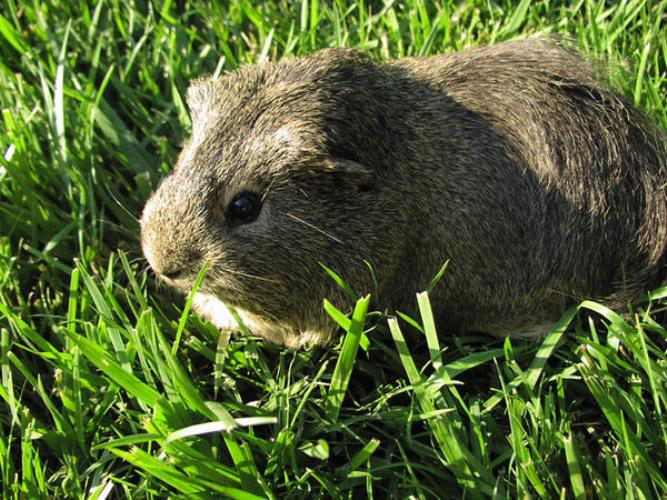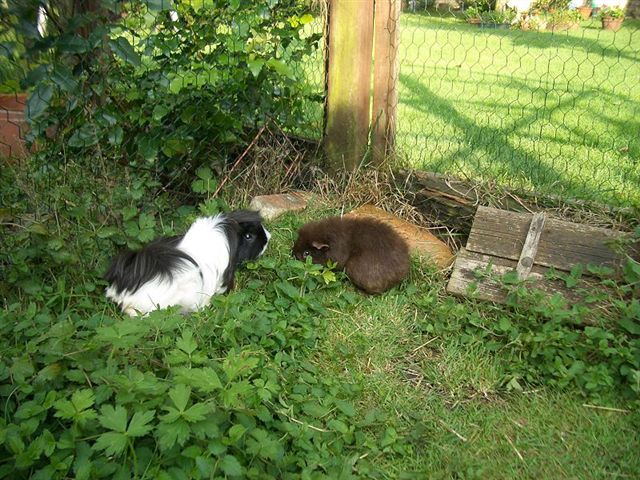

 :: Look at Where I Live!
:: Look at Where I Live!
 The species
Cavia porcellus
are not found in a natural habitat.
Species such as
Cavia aperea,
Cavia fulgidia, and
Cavia tschudii,
which are closely related to the guinea pig, can be
located in parts of
The species
Cavia porcellus
are not found in a natural habitat.
Species such as
Cavia aperea,
Cavia fulgidia, and
Cavia tschudii,
which are closely related to the guinea pig, can be
located in parts of
 The guinea pigs domestic habitat is
best when they are in groups of two or more.
Guinea pigs bond extremely well with each other,
and thrive when living with one another.
These animals usually live in cages but when an
owner has an abundant amount of these creatures, a whole
room is used for their comfort. The cages are normally
made of wire with a solid floor covered in wood shavings
to absorb urine.
A nestbox is usually put into the guinea pigs
cage because these creatures are very shy.
In the wild, they keep a low profile by
retreating behind rocks, in bushes or under leaves when
resting or sleeping.
If this need to retreat is not met, it will
greatly increase their stress level, making them more
susceptible to illness.
The guinea pigs domestic habitat is
best when they are in groups of two or more.
Guinea pigs bond extremely well with each other,
and thrive when living with one another.
These animals usually live in cages but when an
owner has an abundant amount of these creatures, a whole
room is used for their comfort. The cages are normally
made of wire with a solid floor covered in wood shavings
to absorb urine.
A nestbox is usually put into the guinea pigs
cage because these creatures are very shy.
In the wild, they keep a low profile by
retreating behind rocks, in bushes or under leaves when
resting or sleeping.
If this need to retreat is not met, it will
greatly increase their stress level, making them more
susceptible to illness.
Guinea pigs were first found in
If you found the guinea pigs habitat fascinating check out its nutrition as well as its life history!



 :: LINKS
:: LINKS



 :: Learn More About:
:: Learn More About:

